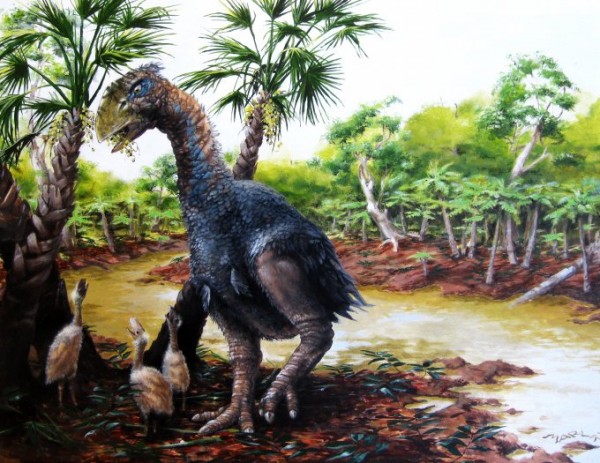By Ana Verayo, | February 15, 2016

A prehistoric giant flightless bird once thrived in the Arctic Circle more than 50 million years ago.
An extinct prehistoric flightless bird known as the Gastornis reveals crucial clues about the significant and major impacts of climate change on animals and plants that once thrived in the Arctic region in a new study.
Like Us on Facebook
The fossilized toe bone of a Gastornis was discovered in the Ellesmere Islands in the Arctic region during the 1970s. Now, paleontologists examine the bone for the first time ever in order to link this extinct species to the effects of climate change.
Scientists say that the bird is estimated to grow up to six feet tall that thrived in the frigid temperatures of the Arctic around 53 million years ago. The Eocene Arctic flora and fauna that included the Gastornis and other mammals suffered from an intense winter during that time, according to researchers and even if the climate in the Ellesmere Islands is mild, the prehistoric birds suffered long winters and little sunlight.
Researchers also believe that the Gastornis populations and other duck ancestors known as Presbyornis were not migrating to the Arctic Circle every year but it is possible that they have been residents of the northern polar region.
In this new study, more evidence and clues are revealed about the presence of these ancient birds in the Arctic that could link to the possible migration patterns of birds today. For example, during the Eocene epoch, warmer temperatures have opened the region to many new resident species in the Arctic.
According to co-author of the study, Jaelyn Eberle from the University of Colorado, permanent Arctic ice is predicted to disappear soon, which has been existing for millenia. Other animal species may become future residents of the frozen region but alligators and giant tortoises will not return to the Ellesmere Islands in the near future.
Researchers say that knowing climate change effects and global warming patterns can help predict changes in animal and plant populations. Wildlife populations depend on a myriad of factors, however, the most crucial one is determining the health status of their habitats.
Plants and animals should need suitable environmental temperatures to thrive, that is the most important determining factor of their survival. Also, climate change can affect their food supply especially migratory birds as they also follow seasons for foraging insects, flowers and plant seeds.
This new study is published in the journal, Scientific Reports.
-
Use of Coronavirus Pandemic Drones Raises Privacy Concerns: Drones Spread Fear, Local Officials Say

-
Coronavirus Hampers The Delivery Of Lockheed Martin F-35 Stealth Fighters For 2020

-
Instagram Speeds Up Plans to Add Account Memorialization Feature Due to COVID-19 Deaths

-
NASA: Perseverance Plans to Bring 'Mars Rock' to Earth in 2031

-
600 Dead And 3,000 In The Hospital as Iranians Believed Drinking High-Concentrations of Alcohol Can Cure The Coronavirus

-
600 Dead And 3,000 In The Hospital as Iranians Believed Drinking High-Concentrations of Alcohol Can Cure The Coronavirus

-
COVID-19: Doctors, Nurses Use Virtual Reality to Learn New Skills in Treating Coronavirus Patients







